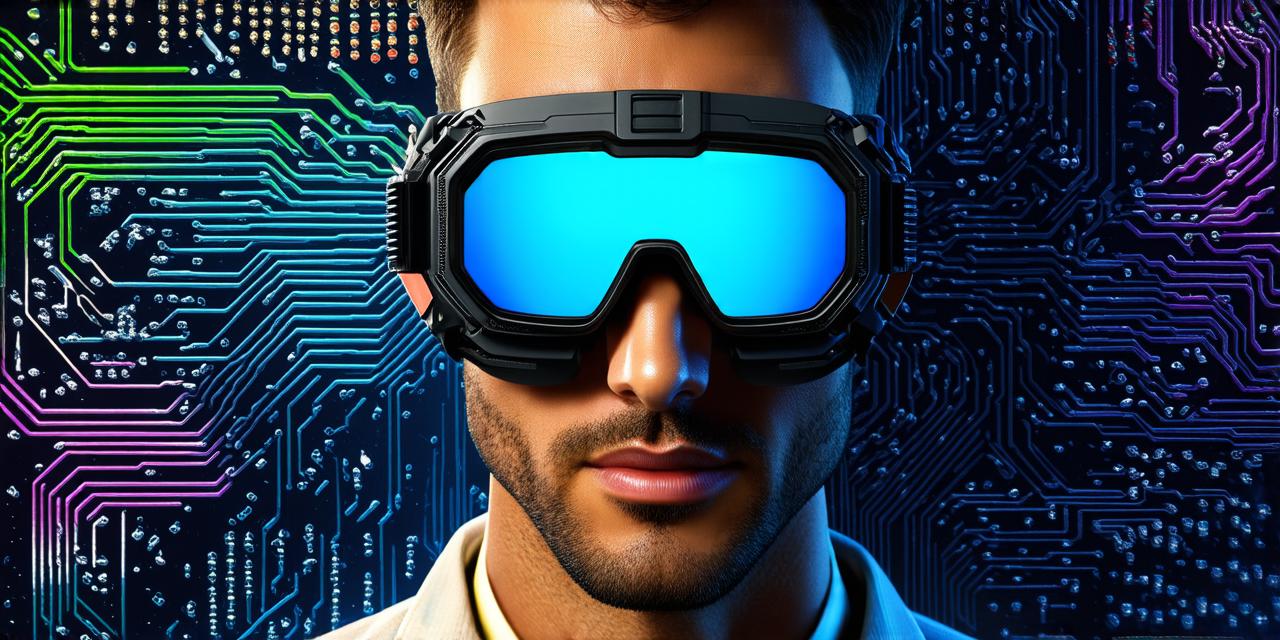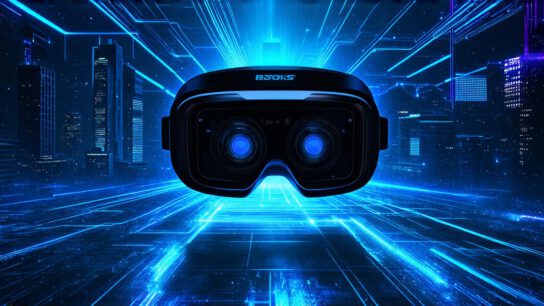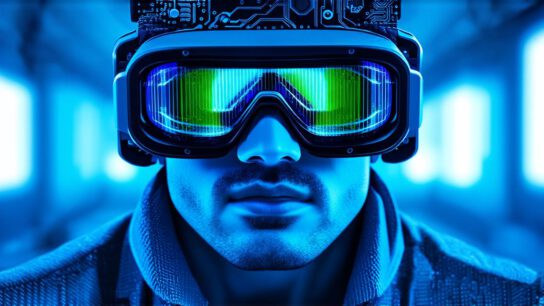Virtual reality (VR) technology has been rapidly evolving in recent years, and virtual reality glasses have emerged as an essential component of this immersive experience. Whether you’re a VR developer or simply someone who is interested in the latest advancements in technology, understanding how virtual reality glasses work is crucial. In this article, we will delve into the inner workings of virtual reality glasses and explore their functionality, advantages, and potential limitations.
What are Virtual Reality Glasses?
Virtual reality glasses, also known as VR headsets or VR headmount displays (HMDs), are wearable devices that enable users to experience virtual environments in a fully immersive manner. These glasses use advanced technology to track the movement of your head and adjust the visual display accordingly, creating a realistic sensation of being in another world.
Advantages of Virtual Reality Glasses
Virtual reality glasses offer several advantages for VR developers and users alike. Here are some of the key benefits:
- Immersive Experience: Virtual reality glasses create an immersive experience by fully engulfing the user’s field of view, eliminating distractions from the real world. This allows users to focus on the virtual environment and become more absorbed in it.
- High-Resolution Display: VR glasses typically have high-resolution displays that provide a clear and detailed visual experience. This is particularly important for developers who want to create highly realistic environments and objects.
- Motion Tracking: Virtual reality glasses use advanced motion tracking technology to track the user’s movements, enabling them to interact with the virtual environment in a more natural way.
- Wireless Connectivity: Most VR glasses are wireless, making it easy for users to move around and experience the virtual environment without being tethered to a computer or other device.
- Comfortable Design: VR glasses are designed to be comfortable to wear, with adjustable headbands and lenses that can be customized to fit different head sizes and shapes.
Disadvantages of Virtual Reality Glasses
While virtual reality glasses offer many advantages, they also have some potential limitations that developers should be aware of. Here are a few of the key disadvantages:
- Expensive: Virtual reality glasses can be quite expensive, with prices ranging from a few hundred to several thousand dollars depending on the brand and features.
- Limited Field of View: While virtual reality glasses provide an immersive experience, they typically have a limited field of view. This means that users may not be able to see everything that is happening in the virtual environment, which can limit their ability to interact with certain objects or environments.
- Motion Sickness: Some users may experience motion sickness when using virtual reality glasses, particularly if they are sensitive to sudden changes in movement or if they have a history of motion sickness.
- Limited Interaction: While virtual reality glasses enable users to interact with the virtual environment in a more natural way, they still limit the amount of interaction that is possible. Users may not be able to touch or manipulate objects in the same way that they would in real life.
How do Virtual Reality Glasses Work?
Virtual reality glasses work by tracking the user’s movement using advanced sensors and algorithms. The sensors, which are typically located on the headset, track the position of the user’s head and adjust the visual display accordingly. This allows users to look around and interact with the virtual environment in a more natural way.
The VR glasses also use motion tracking technology to track the user’s hand movements. This enables developers to create interactive objects and environments that can be manipulated by the user using their hands.
Understanding the Different Types of Virtual Reality Glasses
There are several different types of virtual reality glasses available on the market, each with its own unique features and capabilities. Here are some of the key types:
- Wireless VR Glasses: These glasses are designed to be wireless and offer users the freedom to move around and experience the virtual environment without being tethered to a computer or other device. Some popular wireless VR glasses include the Oculus Quest 2 and the HTC Vive Pro Eye.
- PC-Powered VR Glasses: These glasses require a computer to function and offer users access to a wider range of VR experiences and software. Some popular PC-powered VR glasses include the HP Reverb G2 and the Sony PlayStation VR.
- Mobile VR Glasses: These glasses are designed to be used with a smartphone or tablet and offer users access to VR experiences on-the-go. Some popular mobile VR glasses include the Samsung Gear VR and the Google Daydream View.
- Standalone VR Glasses: These glasses are designed to be self-contained and offer users a fully immersive experience without requiring a computer or other device. Some popular standalone VR glasses include the Oculus Quest 2 and the HTC Vive Pro Eye.
Case Studies: Virtual Reality in Action
To better understand how virtual reality glasses work and their potential applications, let’s take a look at some real-life examples of virtual reality being used in various industries.
Healthcare:
Virtual reality is increasingly being used in healthcare to provide patients with immersive experiences that can help them manage pain, reduce anxiety, and improve overall well-being. For example, virtual reality therapy has been shown to be effective in reducing symptoms of post-traumatic stress disorder (PTSD) in veterans.
Education:
Virtual reality is being used in education to provide students with immersive learning experiences that can help them better understand complex concepts and ideas. For example, virtual field trips allow students to explore historical sites and natural wonders without ever leaving the classroom.
Gaming:
Virtual reality is revolutionizing the gaming industry by providing users with highly immersive experiences that can transport them into new worlds and environments. For example, VR games like Beat Saber and Half-Life Alyx have become incredibly popular among gamers.
Training and Simulation:
Virtual reality is being used in training and simulation applications to provide realistic experiences that can help professionals develop their skills and improve their performance. For example, pilots can use virtual reality simulations to practice flying in a safe and controlled environment.
FAQs: Frequently Asked Questions About Virtual Reality Glasses
1. What are virtual reality glasses?
Virtual reality glasses, also known as VR headsets or VR headmount displays (HMDs), are wearable devices that enable users to experience virtual environments in a fully immersive manner. These glasses use advanced technology to track the movement of your head and adjust the visual display accordingly, creating a realistic sensation of being in another world.
2. What are the advantages of using virtual reality glasses?
Virtual reality glasses offer several advantages for VR developers and users alike. They provide an immersive experience that can transport users into new worlds and environments. They also enable users to interact with the virtual environment in a more natural way, and they can be used for a wide range of applications, including healthcare, education, gaming, and training.
3. What are the different types of virtual reality glasses?
There are several different types of virtual reality glasses available on the market, each with its own unique features and capabilities. Some popular types include wireless VR glasses, PC-powered VR glasses, mobile VR glasses, and standalone VR glasses.
4. How do virtual reality glasses work?
Virtual reality glasses work by tracking the user’s movement using advanced sensors and algorithms. The sensors, which are typically located on the headset, track the position of the user’s head and adjust the visual display accordingly. This allows users to look around and interact with the virtual environment in a more natural way.
5. What industries are using virtual reality glasses?
Virtual reality is being used in various industries, including healthcare, education, gaming, and training and simulation. It offers immersive experiences that can help users manage pain, reduce anxiety, better understand complex concepts, improve performance, and more.



